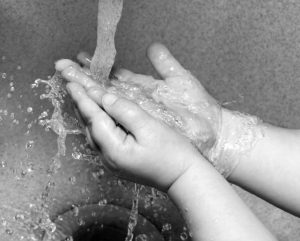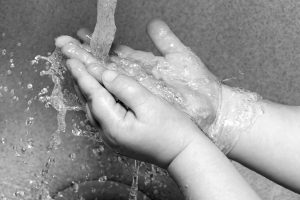Psychoeducating Parents to Defeat their Child’s OCD Monster! By Jenny C. Yip, Psy.D.
 “Families really need to be involved in treatment, because they really do play a part in OCD even when they don’t realize it. Whenever I had company over, I didn’t know they were all contaminating the whole house for my son.”
“Families really need to be involved in treatment, because they really do play a part in OCD even when they don’t realize it. Whenever I had company over, I didn’t know they were all contaminating the whole house for my son.”
-Mrs. Jones, mother of a 19-year-old adolescent who was successfully treated in an intensive treatment program
It cannot be stressed enough the necessity of involving parents and other caretakers in the treatment of children and adolescents with obsessive-compulsive disorder (OCD). This is also essential for those adults with OCD who continue to live with and depend upon their parents.
OCD typically involves family members of the patient suffering from this disorder. It significantly interferes with family dynamics, and has a noticable impact on family functioning. In addition, families play a critical role in the patient’s treatment readiness, compliance, recovery rate, and relapse. Thus, consideration of the familial context, developing healthy collaborative relationships among the patient, his/her family, and the therapist, and integrating the family into treatment is vital to treatment outcome.
The level of involvement of families in patient’s OCD varies. However, a family’s affect level can affect and is affected by OCD. For instance, a calm supportive family may improve the outcome of OCD treatment, whereas a family that is excessively critical and overinvolved may exacerbate the symptoms in the patient. It is crucial to assess family dynamics such as these accurately, in order to treat OCD successfully. At minimum, one of the parents or a caretaker is present throughout the treatment process, especially during the initial assessment. This allows the patient, parent, and therapist the opportunity to explore the individual’s subjective experience of OCD, as well as specific symptoms and underlying fear structures.
Following a thorough and comprehensive assessment of the patient’s obsessive fears, compulsive behaviors, and the family’s level of involvement in the patient’s rituals, comes the crucial task of psychoeducation. The purpose of psychoeducating the family is to provide a cognitive-behavioral framework of OCD, and to explain the treatment process. The most significant motivator and predictor of treatment success is to ensure that each family member understands how OCD functions within the context of the family, and how the family as a whole can defeat OCD.
Understanding OCD: Learning about OCD and its symptoms is an important first step in understanding how to defeat it. The family must learn such key concepts as the vicious cycle of OCD, the OCD triangle, the overappraisal of threat, harm, and danger in obsessive fears, the physiological law of habituation to a feared response, and the various cognitive errors in the interpretation of intrusive thoughts to have meanings of threat, harm, and danger. Accurately identifying the symptoms of OCD, requires mindfulness. Mindful awareness training is part of CBT, and a necessary component to treatment success.
Not participating in OCD behaviors: Once the family understands how they function within the patient’s OCD cycle, family members must agree not to partake in any part of the patient’s ritualistic behaviors. For instance, many pathological doubters seek reassurances from their parents, or ask their siblings to check door locks, stoves, cleanliness of objects, etc. more often than necessary. These repetitive behaviors often irritate those who are pulled involuntarily into the vicious cycle of OCD. In order to reduce their own frustration, family members may give in to the OCD by complying with the child’s request, which, in turn, only reinforces the obsessions and rituals.
When a patient insists on involving another in his/her ritualistic behavior or
reassurance seeking, the rule of thumb for the involved family member is to always courteously respond with “it’s the OCD asking.” Not only would family members detach themselves from the rituals of OCD by identifying the behavior as “OCD,” this response also helps the patient separate him/herself from the OCD, since many have come to identify themselves as merged with the disorder. Accordingly, Mrs. Jones affirms, “Once I understood that I was actually contributing to my Ben’s OCD, I was able to tell him that ‘it’s your OCD that’s asking me,’ which also took the burden off my shoulders.”
Exposure: In helping the patient manage the specific obsessions and compulsions, the family must also learn the basic principles of Cognitive-Behavioral Therapy (CBT) and more specifically Exposure and Response Prevention (ERP), which are the most effective methods for treating OCD. To understand the basics of CBT and specifically ERP, the family must be present and involved during the exposure exercises. The purpose of this is to help family members learn the tools necessary to manage obsessive-compulsive symptoms upon termination of treatment. Since children tend to resist exposure exercises due to the discomfort they arouse, having a family member present and involved reduces manipulations that the child may engage in. As Mrs. Jones clearly confirms, “…being involved (in treatment) forces the child into accountability and keeps him from manipulating. Ben was willing to protect OCD at all cost.”
The purpose of exposures is to reduce the anxiety and discomfort associated with obsessions through a process called habituation. Habituation is the natural process by which our nervous system gets “used to” or “bored by” feared stimuli through repeated and prolonged contact.
There are two types of exposures: in vivo and imagery. In vivo or “real life” exposures require the patient to confront the fears in the flesh. For instance, a child may be asked to touch feared objects, such as an empty trashcan or other “contaminated” objects, without alleviating the anxiety with handwashing compulsions. Through repeated practice, the patient realizes that the feared catastrophic consequence does not occur, and the initial anxiety associated with the feared situation decreases. Exposures are conducted according to hierarchical stages, in which components of anxiety are broken into smaller pieces. We call them baby steps.
Sometimes it is impractical or impossible to create the actual feared situation, for example, the fear of developing a disease or losing a loved one. In these situations we utilize imaginal exposures, which involve prolonged and repeated visualizations of the feared image or situation along with the experience of anxiety. Variations of different scripts of imagery tapes are made and tailored to the individual’s needs and fear structures, which are then replayed continuously until the patient habituates to them.
In addition to the above guidelines for the family, the following coping strategies should be adopted:
• Don’t take OCD upon yourself. Separate self and family from OCD.
• Know others are out there. You are not alone. Connect with other family members for support and encouragement.
• Be cool! Use a calm manner. Reacting in frustration and distress only leads to further frustration and distress.
• Always speak clearly, calmly, and in a positive way.
• Adjust expectations realistically to reflect current circumstance. Never compare your child’s progress to anyone but him/herself.
• Encourage your child to put extra energy into enjoyable activities (i.e., exercise, listening to music, etc.).
• Redirect your own energy into enjoyable activities rather than being a slave to your child’s OCD.
• Identify rituals and compulsions for what they are, rather than participate in them.
• Go about your own business as usual. Reconnect with friends, hobbies, and family routines.
• Never be judgmental of your child’s behavior.
• Never make decisions for your child (unless a young child). Help your child build confidence by allowing the patient make his/her own choices.
• Do not pressure the patient to stop compulsions or restrict rituals. Just stick to tasks assigned by the therapist.
• Set the rules, limits, and boundaries clearly, and make certain the patient fully understands them.
• Solve problems step-by-step. Make changes gradually. Work on one thing at a time.
In essence, the goal is to train family members to become therapists themselves. Teaching and learning is the main philosophy and pillar on which our success stands, and we believe that emphasizing success and building upon it will build more success. Knowledge is power, and if there is a silver lining to OCD, it is having insight to the self, OCD, and others, and becoming more aware of the present; here and now. We must learn from our interactions with each other, as students and teachers, children and parents, patients and therapists.
“The best is for families to understand that it’s going to be tough, but when they get better, they’ll be a new person. We got Ben back who was covered underneath OCD, and I don’t think we could’ve done it without being involved and learning the tools we have” – Mrs. Jones.
Tags: childhood ocd, obsessive compulsive disorder, OCD, Psychoeducation, symptoms of obsessive compulsive disorder








Wonderful article that not only should be read by parents, but by therapists who deal with OCD as well. My son suffered from OCD so severe he couldn’t eat, yet we (his parents) were minimally involved (if at all) in his therapy. Thankfully, Dan has recovered and I have become an advocate for OCD awareness.Thank you for this very informative article.